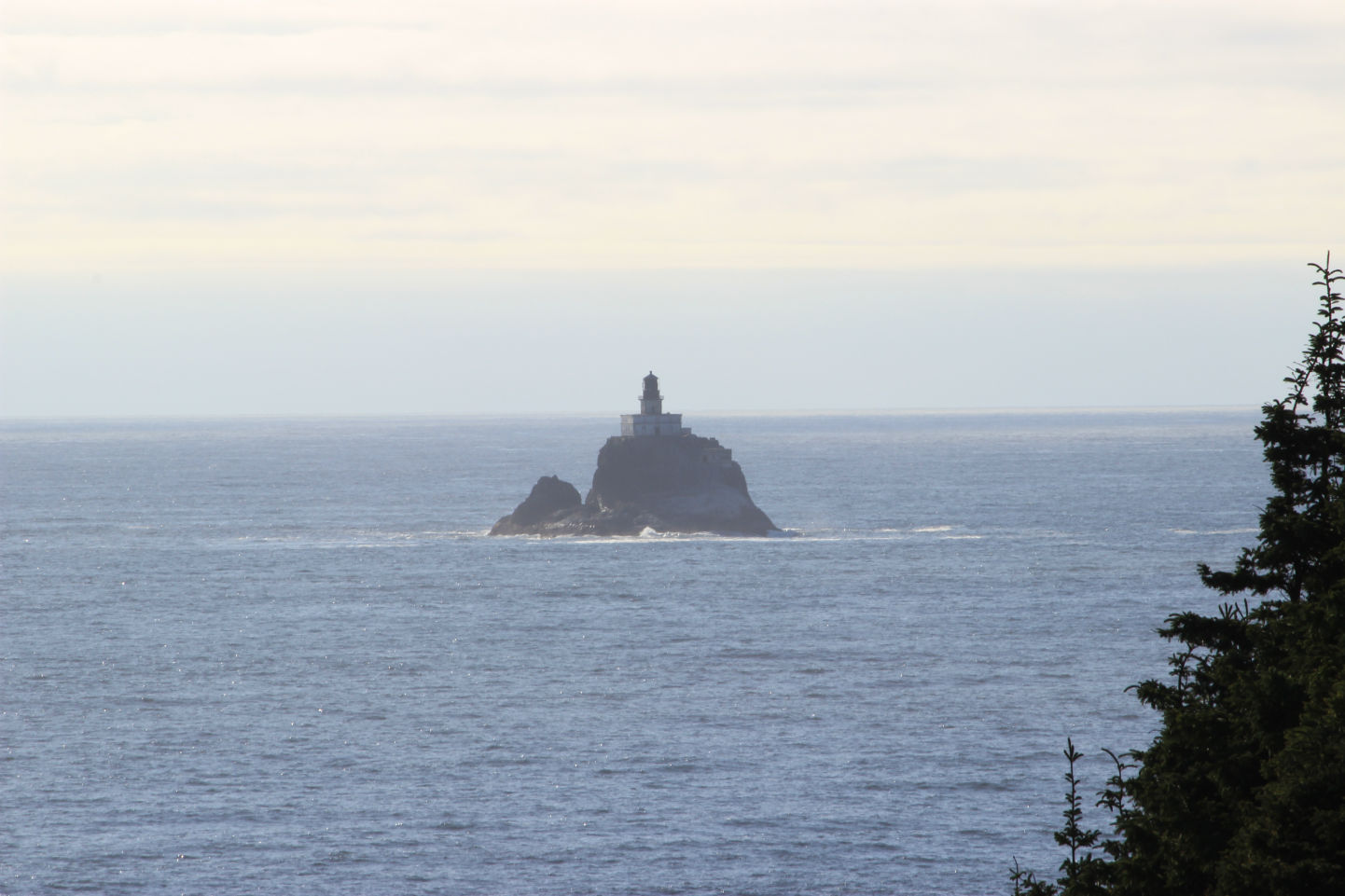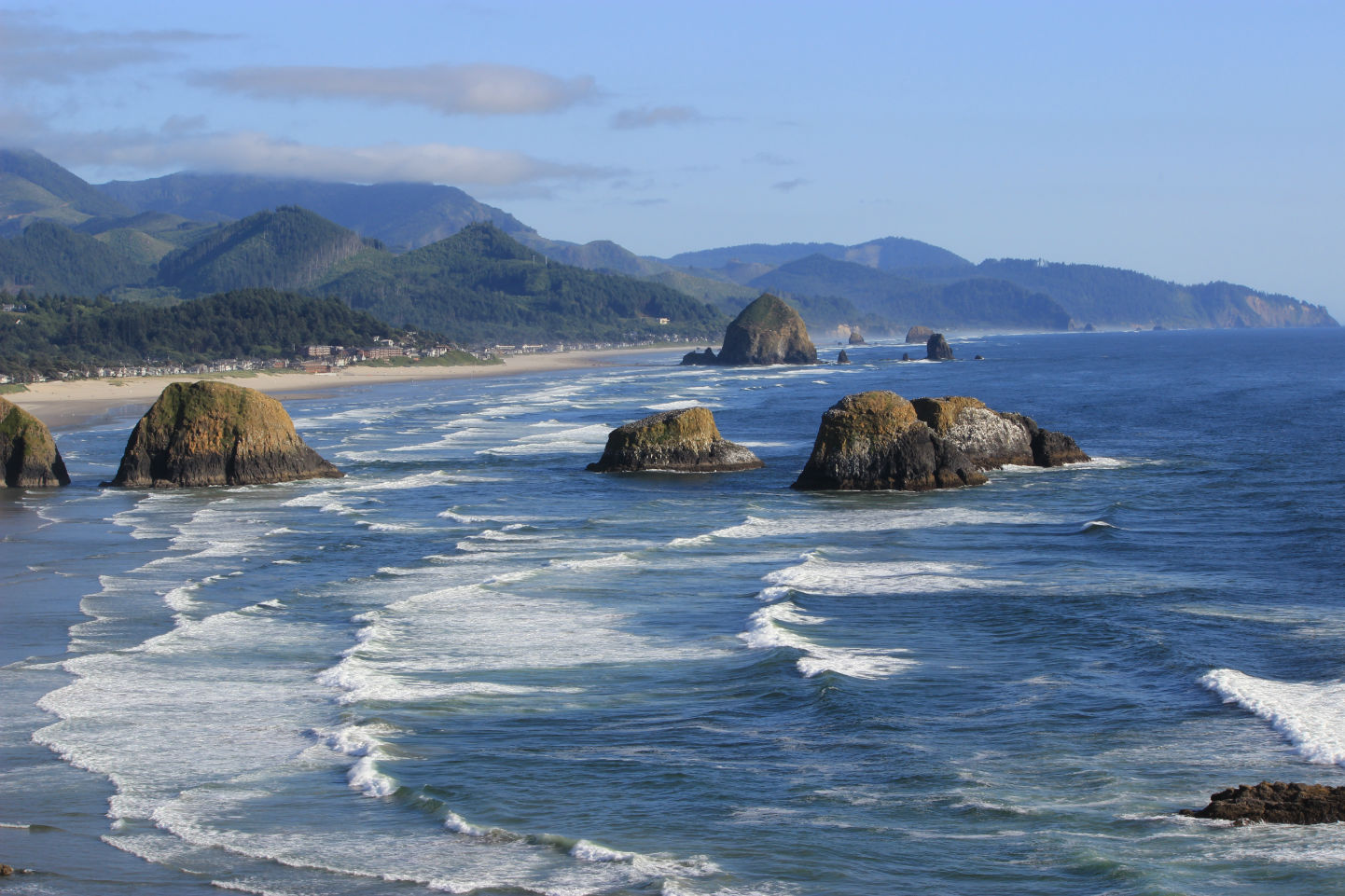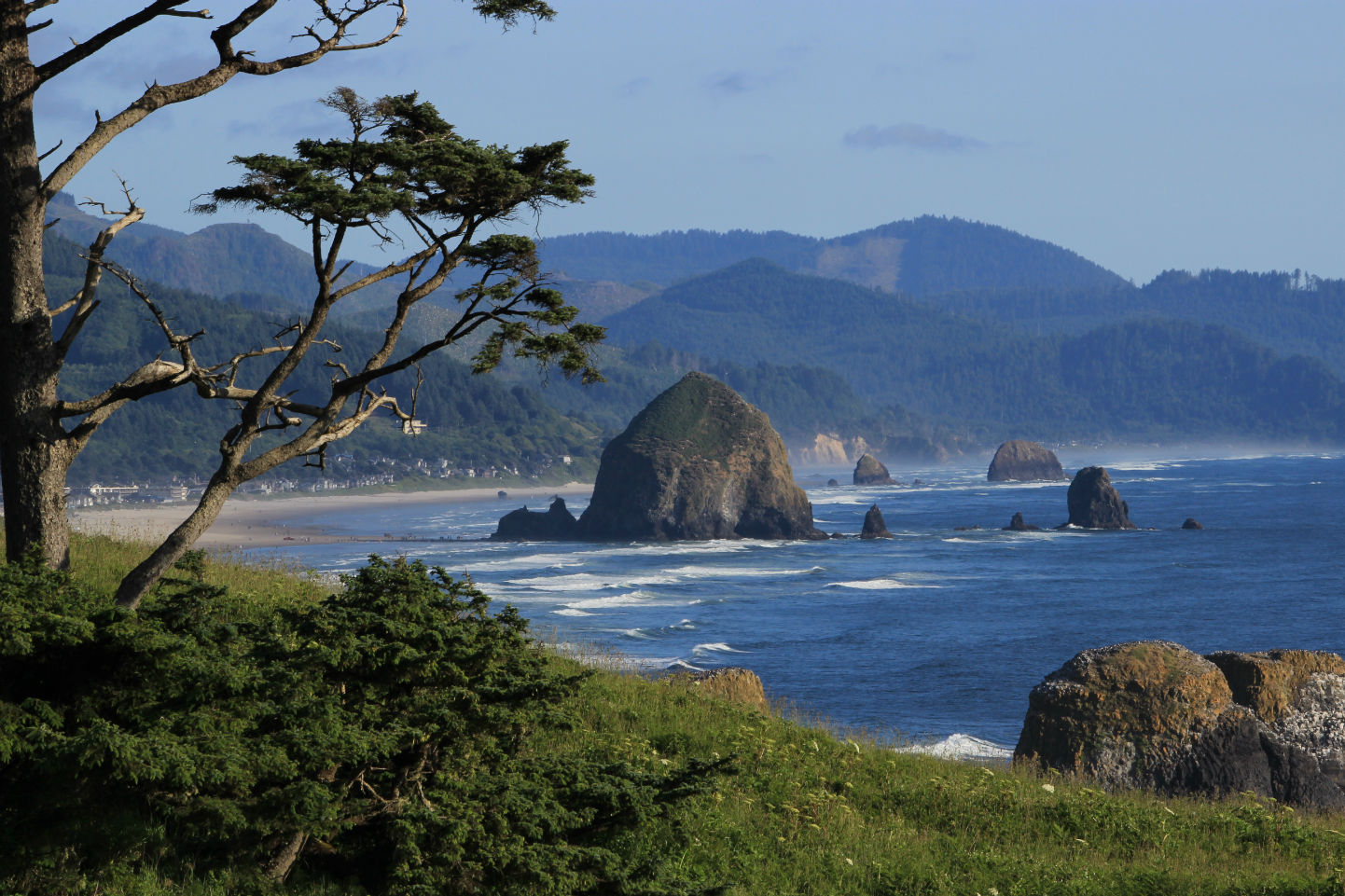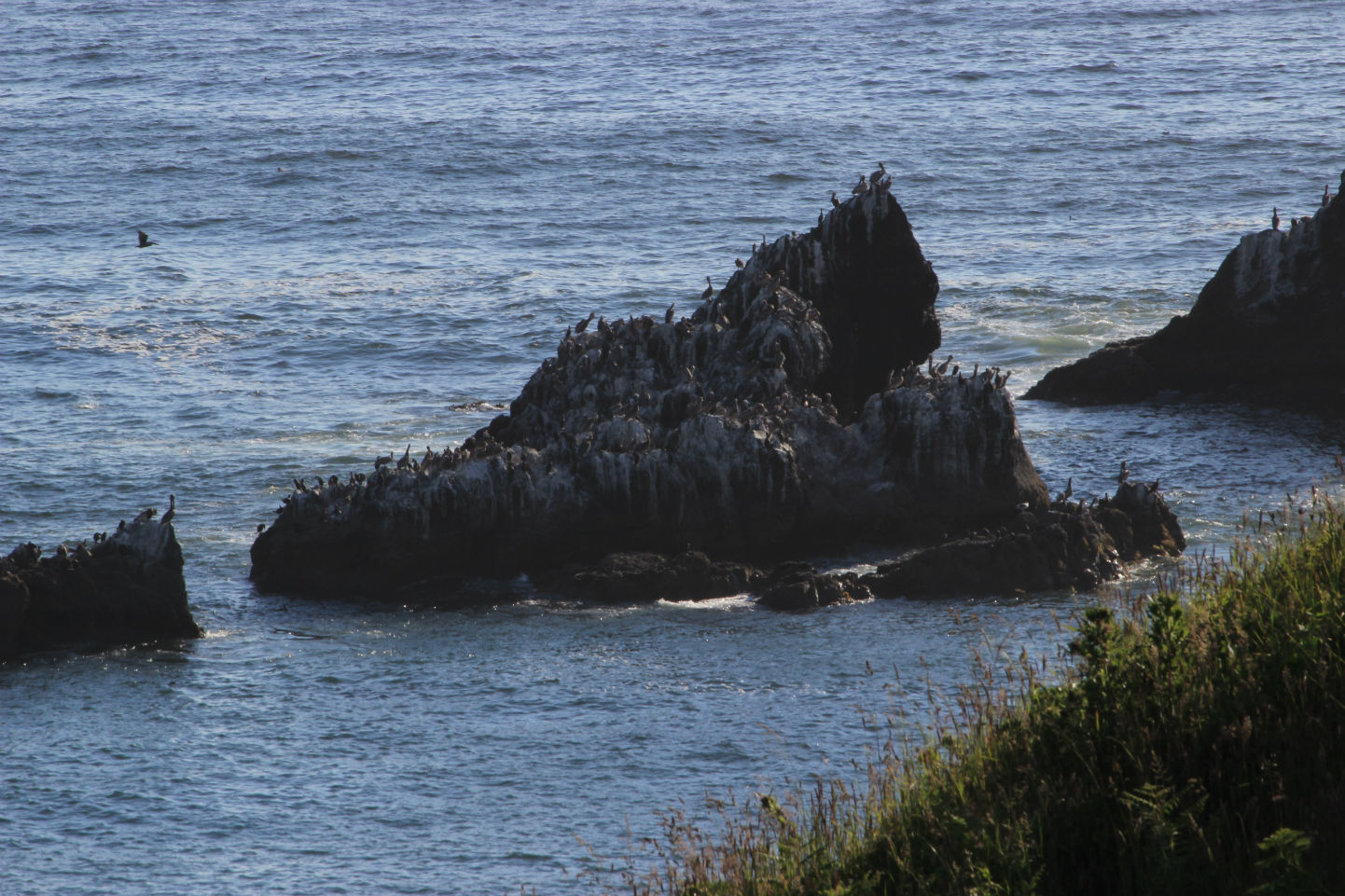 As Sue and I headed down the Oregon coast on our Northwest Trip, we continued our Lewis and Clark discoveries. We visited Seaside, where Lewis and Clark had some of the men make salt from the seawater. We were heading on down to Cannon Beach where a beached whale was also part of their visit. We turned off to Ecola State Park. It’s a beautiful drive through the park and we ended at an overlook high above the ocean.
As Sue and I headed down the Oregon coast on our Northwest Trip, we continued our Lewis and Clark discoveries. We visited Seaside, where Lewis and Clark had some of the men make salt from the seawater. We were heading on down to Cannon Beach where a beached whale was also part of their visit. We turned off to Ecola State Park. It’s a beautiful drive through the park and we ended at an overlook high above the ocean.
I happened to look out and what did I see? A lighthouse sitting out on a small rocky island. We didn’t realize it at the time, but later found out that was the Tillamook Rock Lighthouse. Talk about being in the middle of nowhere. It’s over a mile offshore.
Ok, you tell me, how in the world did they build that lighthouse way out there? It turns out that it was quite the feat. We forget sometimes that all the amenities that we enjoy now weren’t around when some amazing things were built. It’s incredible to think that this lighthouse was built in the late 1870’s. I think it would be a pretty major feat to build it now, let alone 150 years ago.
In 1878, Congress appropriated money to build a lighthouse to cover this part of the Oregon Coast. Due to frequent weather issues at another location further south, this point was considered as an alternative. H.S Wheeler took a boat out to the rock in June 1879 to determine whether it would be possible to build a lighthouse on this rock. Rough seas made it nearly impossible to land, but with perseverance, Wheeler finally landed and was able to explore the rock.
Wheeler decided that the rock could be built on and work began. From the beginning, work was treacherous. Master mason John Trewavas was the original surveyor, and, during one trip to the rock, slipped while stepping onto the rock and was swept away in the angry sea, his body never to be recovered.
Local men refused to work on the project and Trewavas’ replacement had to hire workers who weren’t familiar with the area and sequester them until construction began so that wouldn’t be frightened away! Sounds like things got off to a great start.
In October 1879, the first workers landed on the rock with additional workers following shortly after that. In order to transport men and supplies to the rock, a line was strung between the U.S Revenue Cutter Thomas Corwin and a ring bolt in the rock. Pulleys were used to move men and supplies along the line. It was difficult to keep the line taught with the movement of the seas, and frequently, men were drug through the cold water on their way to or from the rock.
During the first 10 days on the rock, the workers were totally exposed to the elements. After all, there was no shelter built yet. It was a difficult time, and eventually the men excavated a shallow area on the northeast side of the rock where a strongly built timber shanty was erected and bolted to the rock. This finally provided some shelter for the workers.
Stop for just a minute and look at the picture above and try to imagine workers out on that barren rock, no shelter, and waves crashing all around, trying to build the lighthouse. It was a pretty calm day when we visited. Imagine what that would look like with rough seas and waves crashing against the rock. Those men must have been made of different material than I am, that’s for sure.
Wicked storms sometimes hit, carrying away provisions, tools, water tanks, and damaged working areas that had been erected.
Eventually the area for the lighthouse was leveled (224 days into the project) and work on actually constructing the lighthouse began. After 575 days of labor, the lighthouse was finally operational on January 21, 1881. It included a fog siren in addition to the light.
This was difficult duty, though, and the first head keeper, Albert Roeder, resigned after only 4 months. The lighthouse was frequently pounded by storms, and damage was a common occurrence, requiring regular repairs. The damage included shattering of the lighthouse lens and eroding the rock.
Cramped quarters, storms, and fog made this a difficult place to work together, and caused a lot of tension with the crew. The station was nicknamed “Terrible Tilly”. There are stories of angry lighthouse keepers who refused to talk with one another at dinner and passed notes instead. There were reports that members of the crew were sometimes removed from their post because they desired to kill the head keeper. Others were removed because of mental struggles that were likely due to the difficulty of the assignment.
Tillamook Rock Lighthouse continued to operate despite the challenges of location, storms, crew until September 1, 1957. It has been purchased several times over the years and was eventually turned into a columbarium where people could have their ashes interred inside the lighthouse. Problems with this venture resulted in only around 30 urns being placed out of a possibility of being able to house 300,000 urns.
The lighthouse included a 62 foot tower that was 133 feet above sea level. It was visible from 18 miles away. The rock that it is on is less than an acre, not much room for a crew to occupy for extended periods of time.
The lighthouse is now listed on the National Register of Historic Places. The only way to get the rock is via helicopter. Seabirds nest there, and no one, including the owners, can land during that time.
Unfortunately, you can’t actually visit this lighthouse, so enjoy the view from Ecola State Park. It actually is a stunning view from the park. Check out the fabulous view of Haystack Rock down by Cannon Beach.
And you can spot wildlife from the overlook. We saw a number of sea birds, but seals are often seen as well.
To get to the park, and see the lighthouse check out the map below.
And a collection of pictures of the views from Ecola State Park:
The views alone are worth the trip to see the Tillamook Rock Lighthouse. It wasn’t until we went to our next lighthouse and we got a flyer that we realized the lighthouse we had seen from Ecola State Par was Tillamook Rock Lighthouse and one of the nine original Oregon coast lighthouses. At that point we decided to see them all! Like Tillamook Rock Lighthouse, they aren’t all open to the public, and some weren’t open the day that we visited, but visit them all we did!



